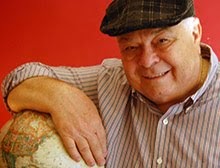 |
| Charlotte has never been a culinary oasis, but there once were dishes in that were hometown favorites (Photo: andrew taylor) |
Longtime Charlotteans
will know exactly what I am talking about when I say we should bring back some
of our classic favorites that have, like so much of the city’s history,
disappeared from the fabric of the Charlotte
About a half a century
ago, a group of young professional businessman began eating breakfast at Salem
Suber’s Town House Restaurant. Some of the locals claimed “The Town House had
the worst food and the best clientele in town.”
 |
| The Coffee Cup was an institution (Photo: andrew taylor) |
Actually the food was
very good, but the phrase always got a chuckle. The Town House was located at
the corner of Providence Road Providence Road Charlotte
Today a gigantic Harris
Teeter occupies the space, but old timers still long for Suber and his cigar
stubs and the friendly atmosphere of the Town House.
Many of those up and
coming businessmen are still around, even today. Still having breakfast every
day of the week including Sundays and holidays. Still solving the world’s
problems and telling lies.
 |
| South 21 is a local legacy (Photo: andrew taylor) |
They call themselves
the ROMEOs now, which stand for “Really Old Men Eating Out.” Over the years
they have shut down the Town House, Rogers Barbecue, the Athens East 7th Street
Though some of the
original members remain, the group has morphed over the decades, losing some
and gaining others, the fellowship remains a cross section of Charlotte
One morning during a
lull in the usual lively political/sports/religion debate, the guys began
reminiscing about things they used to love to eat in Charlotte
 |
| Athens was one of a few all night eateries where breakfast in the wee hours was like the barroom scene in Star Wars (Photo: andrew taylor) |
After much discussion,
they decided to create a menu featuring nothing but items that were once
treasured Charlotte Charlotte
With that in mind, here
is the ROMEOs’ list of Charlotte
Charlotte’s Landmark
Cuisine
Appetizers:
Dolamades (Epicurean) – Delicious stuffed grape leaves
filled with lamb, beef or cheese that came to the table before every meal.
Dolamades may still be around Charlotte
Shrimp Cocktail (Ranch House) – It had nothing to do with
the shrimp. It was all about that horseradish sauce that would bring tears to
your eyes and make you beg for more.
Fried Pickles (Penguin) – Yeah, you can still get fried
pickles in Charlotte
Onion Rings (Herlocker’s/John Country Kitchen)
Soup:
Lobster Bisque (The Chateau) – The Chateau occupied two
different locations on Morehead
Street
 |
| Andersons was home to the Hot Dorsey Sandwich -- a Charlotte favorite that has disappeared (Photo: andrew taylor) |
Entrees:
Hot Dorsey Sandwich (Anderson Anderson
The Gambler (Town House) – Before there was Harris
Teeter, an A&P occupied space next door to the Town House. Salem Suber
would purchase inexpensive, but tasty, steaks there and serve them in his
restaurant. Now and then they could be a little “chewy”, hence the name, but
more often than not it was a lot of bang for your steak-loving buck.
Roast Pork Egg Foo Yung (Ho Toy)
Broasted Chicken (The Venus)
– Looked fried, tasted better.
Prime Rib (Slug’s Rib)
 |
| Great smoke barbecue (Photo: andrew taylor) |
Barbecue (Camp Greene/Old Hickory House) – Smoked beef and
pork with flavor unlike any other in town.
Chateauburger (The Chateau) – Quite simply the best and
juiciest hamburger you will ever eat.
Country Ham (Laura’s Rozelle House) – You could spend
a lifetime just talking about the family style chicken, Salisbury steak and
home-cooked veggies at Laura’s but the country ham was so good that it stands
alone.
Double Dipped Wings (Press Box) – The
crunchiest most flavorful wings ever.
Deep Dish Pizza (La Strada) – There’s pizza and there is
pizza. THIS was PIZZA!
Pancakes (John’s Country Kitchen) – If you never tried one
of Jimmy Margiotis’ pancakes you never had a real pancake.
Leo’s Special (Leo’s Delicatessen) – A combination of
salami, pastrami, corned beef, bologna and Swiss cheese, piled high and served
on your choice of bread with chips and a pickle for $5.50. Best deli sandwich anywhere
until you got to New York
Desserts:
Pecan Pie
(Anderson
Almond
Cookies (Ming
Tree)
Homemade
Ice Cream (Spoon’s)
 |
| Coldest beer in town (Photo: andrew taylor) |
Snacks:
Peanuts (Tanner’s) – Bowls of
big fat salted peanuts with the skins still on them were all you needed for a
between meal treat.
Drinks:
Orange
& Grape Drinks (Tanner’s) – They were served so cold they made your teeth hurt, but
they were a marvelous way to wash down those peanuts.
Beer (Penguin) – Today we have lots of superb
micro-breweries and favorite watering holes, but nobody in Charlotte
There you have it.
Nobody said it was a healthy menu, and it certainly isn’t overwhelming in size,
but the ROMEOs will just bet that those old time flavors are coming back to
your taste buds now.
If you think of any more,
let us know. Our menu is flexible, adaptable and waiting for more of Charlotte































